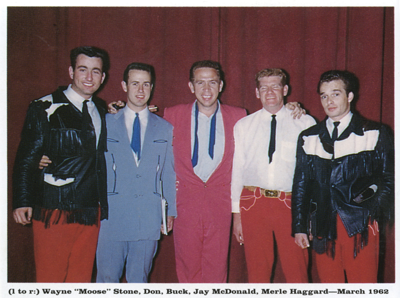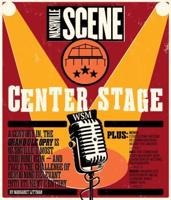In the 1960s and early '70s, country music seemed to be dividing into two opposing camps, as the "Nashville Sound" squared off against the lean, mean country music emerging from the honky-tonks and studios of Bakersfield, Calif. On the surface, it seemed like a war. In reality, it was a conflict that inspired great music on both sides of the divide and still resonates four decades later.
Since March 2012, the Country Music Hall of Fame and Museum has chronicled the story of West Coast country music through the exhibit The Bakersfield Sound: Buck Owens, Merle Haggard and California Country. Music, interactive multimedia displays, and eye-popping stageware and guitars tell the story of how the Dust Bowl migration of the Great Depression combined with post-WWII prosperity to create a very different form of country music from its Southern cousin — a sound centered on dance beats, hard drinkin' and the twang of electric guitars.
Originally scheduled to run 21 months, the exhibit was extended to 30 months, making it one of the longest running exhibits in the museum's history. Over the course of the exhibit's run there have been many special programs, including a spectacular opening concert that featured many Bakersfield alumni, among them the "Bard of Bakersfield," singer and songwriter Red Simpson.
"Red Simpson took Nashville by storm," says Carolyn Tate, vice president of museum services. "He loved it so, and he was great." A reunion of the surviving members of Buck Owens' band the Buckaroos was another special event from the exhibit's run.
"When Buck's sons came in and we had the program with the Buckaroos, everyone was delighted," Tate says. "Buck's music is the gospel here, just like it is the gospel in Bakersfield."
Expanding the museum's scope with the Bakersfield exhibit, Tate says, was one of the best decisions it has ever made. It not only helped to smooth over any lingering sense of a Bakersfield-Nashville rift, it showed the true breadth of country's development and influence.
"It was the right thing for us to do, to reach outside ourselves and not be so Nashville-centric," she says. "We're not the only place in the world where there is country music, as much as we like to think we are. I think a lot of people who thought we would never pay attention to them were truly flattered, and with Nashville being so hot and having such an influx of visitors recently, it was good to present a side of country music that wasn't predictable."
Through the remainder of December, the Country Music Hall of Fame and Museum will feature several programs to close out The Bakersfield Sound in style. The centerpiece is a special concert 2 p.m. Saturday billed as "Close Up the Honky Tonks," with Chuck Mead, Caitlin Rose, Deke Dickerson, James Burton, Cam Ochs and several other special guests spotlighting both the originators and modern inheritors of the West Coast honky-tonk sound. And the story of the Bakersfield Sound will continue to be told after the exhibit closes on Dec. 31.
"We've been talking with Michael Owens [Buck Owens' son] about loaning some of the interactive elements to the Buck Owens Crystal Palace in Bakersfield to keep this cooperation between East and West alive," Tate says. "If there ever were hurt feelings or a sense of rivalry [between Nashville and Bakersfield], hopefully that's gone now. It was a proud moment to bring a lot of people here that the usual Nashville-centered histories don't talk about. You can never get enough of Buck Owens, Merle Haggard and that great Bakersfield sound."
Email music@nashvillescene.com





